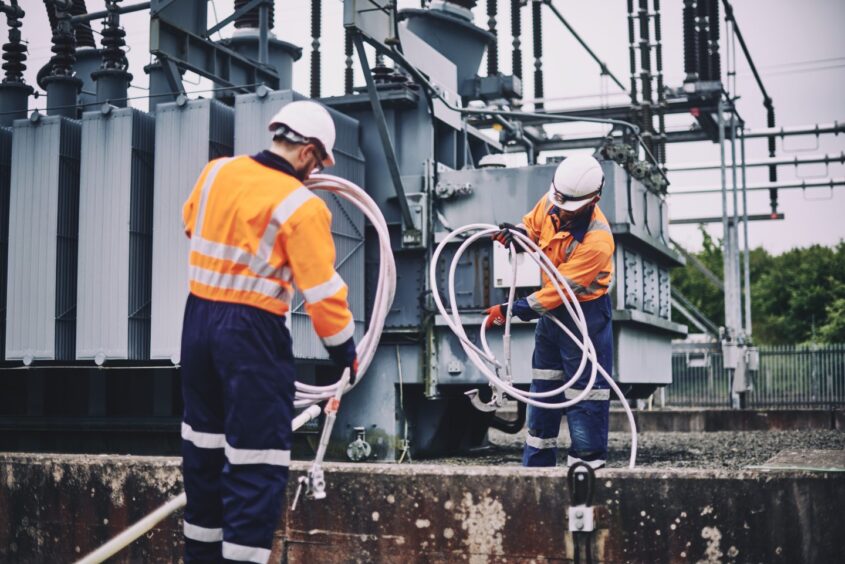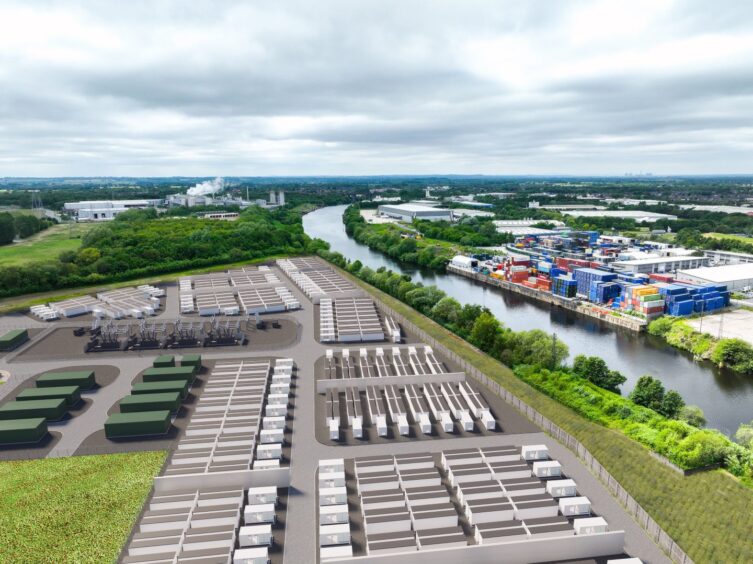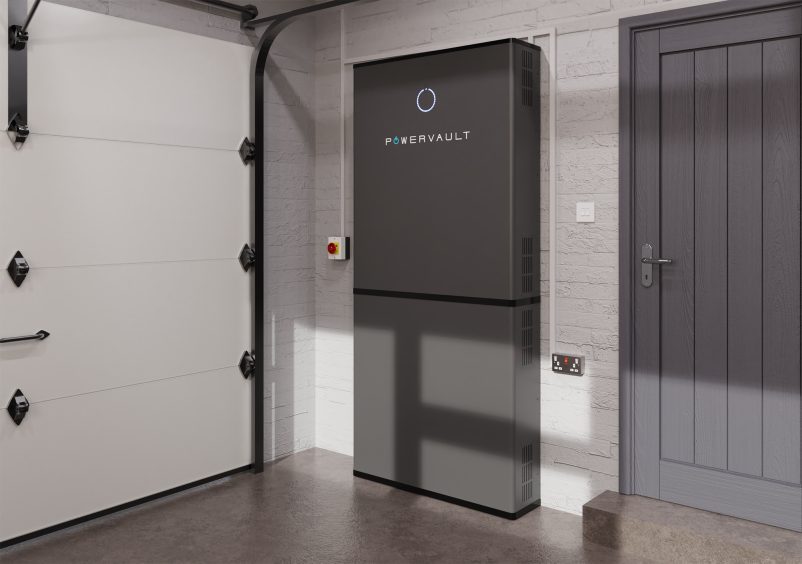
Over the course of nine episodes the Megawatt Hour podcast has covered the ins and outs of batteries and other storage technologies, the ups and downs of the power market and the meanders of the policy landscape.
Our tenth and final episode looks to sum up that journey so far, recapping some of the most important learnings from the series and setting out where energy storage is headed now.
To consider the past, present and future of the sector and beyond, Energy Voice content editor Andrew Dykes is joined by BDO corporate finance David Bevan, as well as National Grid director of customer connections John Twomey and Joe Warren, the founder and managing director of Powervault.
For Mr Bevan, the story so far has been “all about growth.”
“It’s been absolutely phenomenal,” he said. “Let’s go back to four or five years when we first started to come into contact with businesses that were owning and operating assets – there were just a handful.
“Frankly, now every other transaction I look at has a co-located battery storage application associated with it – it’s been a huge fundamental transformation.”
The extent of that transformation is evident in some of the figures pulled put by Mr Twomey, who notes that National Grid now has over 300GW of generation on its books requiring connection to the system across England and Wales, growing to a likely 450GW by spring 2024.
“Ultimately, we need around 55GW of new generation by 2035 to be compliant with the energy scenarios to deliver on net zero,” he added. “If we drill down into that, batteries are a big part of that we have around 44GW which are currently contracted.”
Indeed, the group forecasts that up to 29GW of storage could be needed by 2030 and up to 51GW by 2050 – a significant rise from around 5GW today.
In recent years the TSO has also been working to overhaul its connection and modelling processes to ensure more projects can be connected, with batteries in particular proving incredibly useful in helping manage other constraints on the grid.
Recent changes to the queuing and connection processes have meant National Grid has bene able to bring around 20GW of that capacity forward, including 19 battery projects representing around 10GW of generation.
“The new approach essentially means that batteries are not waiting for overhead lines, because actually they’re helping to manage the constraints on those overhead lines,” he explained.
“That’s been a really positive shift forward and what it’s helped to do is provide better opportunities and confidence, particularly with the investor community for those projects delivering batteries.”
Consumer adoption growing
All of that comes as National Grid’s other arm, ESO, is working to balance demand on the grid while also stewarding the energy mix towards a fully decarbonised system by 2035.
At the other end of that spectrum, Mr Warren and Powervault work to install batteries in homes and businesses behind the meter, usually in conjunction with smaller generation systems like solar panels and wind turbines. Demand is growing in this segment as users look not only to save money on bills, but also take greater control over their energy usage.
This has been boosted by the rollout of smart meters and other technologies, allowing the company to aggregate tariff data and rate costs to adjust demand and benefit users.
“We can use our artificial intelligence to work out the best time to charge and discharge and then send that signal to the battery and the customer will fundamentally, through the supplier hub model, will be benefiting through a change to how much money they pay through the measurement of their smart meter.”
While this has worked well, Mr Warren says the firm also hopes to see further market reform that would allow users to monetize batteries even better.
“We find it sometimes frustrating because we know that our battery is a very flexible asset and if you’re behind the meter, it’s quite difficult to actually monetize that. And a lot of businesses and homes are not currently able to really be rewarded for the benefit their battery could provide if they were able to get access to the right price signal.”
In particular, he says the roll out of half-hourly price settlements is aiding that transition, though a market-wide adoption would help drive further uptake.
Policy development
Over the course of the podcast series, there have been several developments across regulatory and policy frameworks too – the Review of Electricity Market Arrangements (REMA) consultation included.
Mr Twomey said National Grid is supportive of much of the changes proposed, provided it takes a holistic approach to the wider system – though locational pricing remains a potential sticking point.
“At this time we’re probably not convinced that the benefit case at this stage stacks up. Assumptions are really key here to provide a clear answer as to what comes up, but…it is such a big decision and such a big change to policy that it could risk undermining investment, which is required particularly at this stage of the Net Zero journey.”
Other policy asks for Powervault extend to the tax system.
“We currently have a situation where if you invest in a battery you pay 20% VAT if you retrofitted it,” noted Mr Warren.
“We’ve been campaigning for that to be reduced – electricity is currently set at a lower rate of VAT, so effectively what you’re saying is if you invest in an asset to help yourself, to help the grid, then you’re going to be taxed to a higher rate than you would if you just carried on consuming fossil fuel derived energy.”
At the same time, wider economic forces have also shaped uptake of batteries amongst consumers and businesses, particularly as prices soared in the wake of the invasion of Ukraine.
“Previously, electricity was too cheap for them to be interested, and now they’re very interested both to reduce their costs but also hedging their costs and knowing what they are going to be for the next, 5 or 10 years rather than suddenly having a threefold increase in their electricity costs in a year,” he continued.
Long duration challenges
Looking ahead, the trends over size and installation seen over the series so far are not set to slow down – though projects may become larger and less numerous.
Added Mr Twomey: “From intelligence that we’ve got, we reasonably expect the size of the projects to get bigger – that’s to do with the fact that the economies of scale and the costs that we’ve seen have come down and therefore from a financial perspective it makes sense to do it.
“And as there’s a relationship between the volume of renewables and the pace that the renewables are deployed on the system and the level of batteries we need – so longer duration type batteries, bigger batteries – I think we can expect to see all of those kind of business models coming through in the future.”
As for other longer-duration storage, Mr Twomey suggested the TSO would remain open to other technologies and projects – provided they meet the demands of electricity users.
Yet Mr Bevan also sees continued challenges in the market in getting longer duration storage developments off the ground, in part because of significant capex requirements for the likes of pumped hydro schemes.
“There a small number of projects under development, but it would be good to see some kind of signalling that allows those to progress at a more rapid pace,” he said.
Looking further ahead, he also pointed to the remaining hurdles around decarbonising heat. “We’ve done well on the electricity generation front, but when it comes to heat, there’s a whole world of challenge around the corner,” both for households and businesses, he added.
Plenty more challenges remain to be overcome as businesses and the energy mix evolve, whether that’s dealing with the growing share of EVs, managing heating demand, and grappling with the extensive upgrades and new infrastructure needed to decarbonise the grid.
But what is clear is the dramatic rise in energy storage capacity seen in recent years shows no signs of slowing down.
Listen to Episode 10 of The Megawatt Hour.
 © Supplied by Carlton Power
© Supplied by Carlton Power © Powervault
© Powervault








